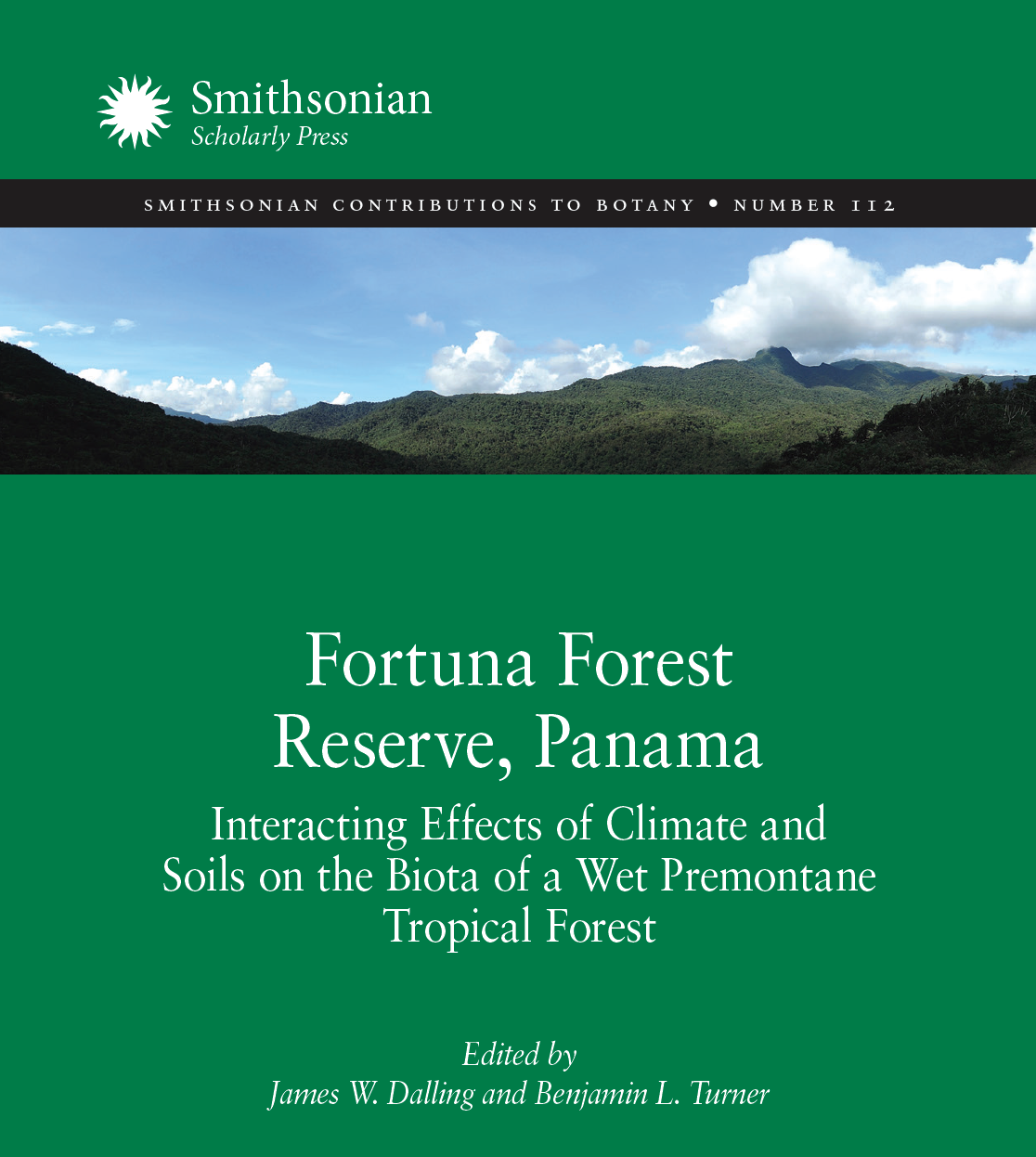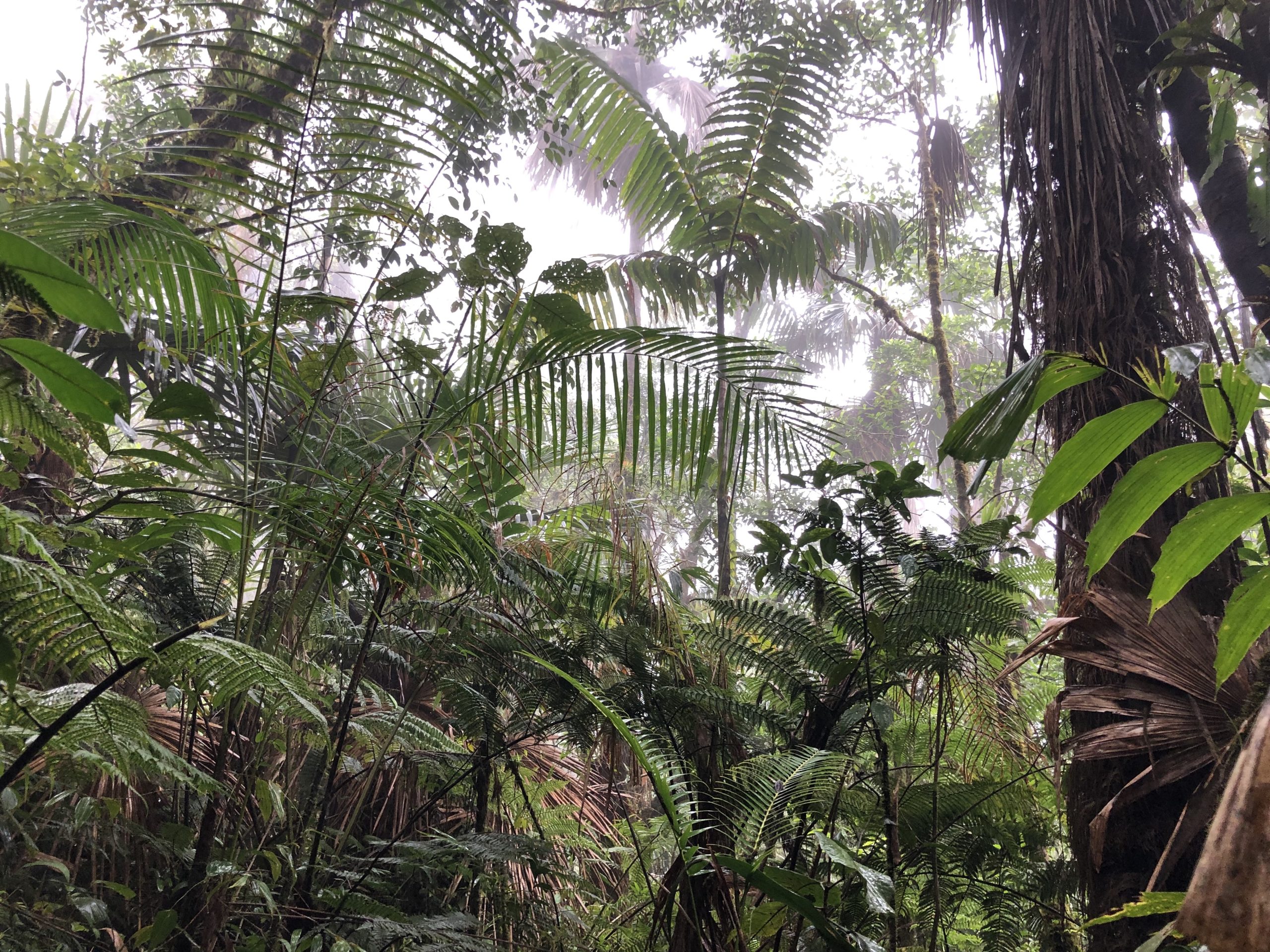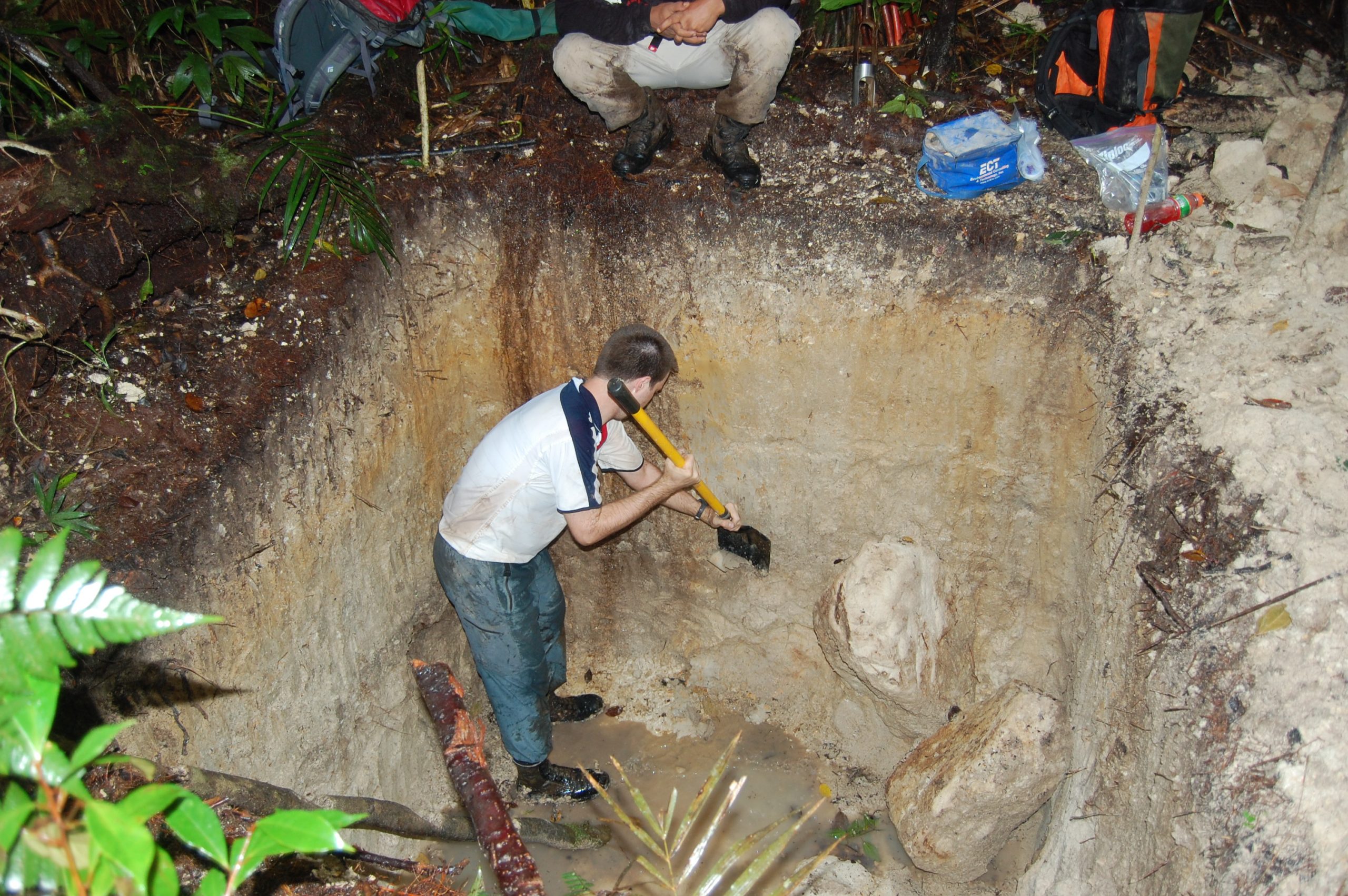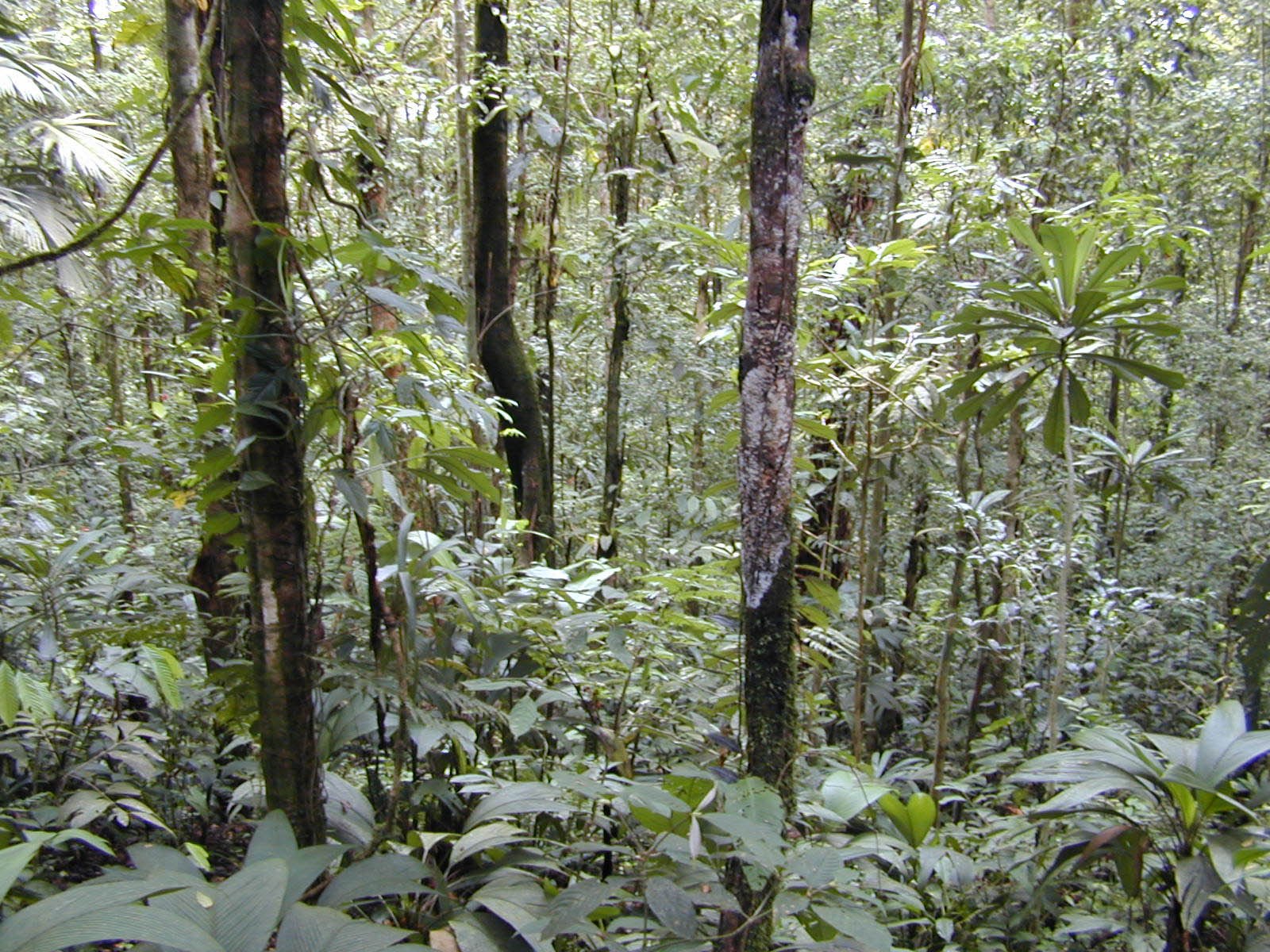 The 19,500 ha Fortuna forest reserve is located on the Continental Divide in Chiriqui, western Panama with elevations ranging from 800 – 2000 m above sea level. We began work at Fortuna in 2003 and have now established 13 one-hectare forest plots spanning gradients of soil fertility and moisture availability. An overall site description and analysis of Fortuna tree communities is provided here. You can also download a pdf of our Smithsonian Contributions to Botany volume on the geology, soils and plants of Fortuna here.
The 19,500 ha Fortuna forest reserve is located on the Continental Divide in Chiriqui, western Panama with elevations ranging from 800 – 2000 m above sea level. We began work at Fortuna in 2003 and have now established 13 one-hectare forest plots spanning gradients of soil fertility and moisture availability. An overall site description and analysis of Fortuna tree communities is provided here. You can also download a pdf of our Smithsonian Contributions to Botany volume on the geology, soils and plants of Fortuna here.
Below we provide a brief description of the most distinct forest communities of Fortuna. We would be happy to collaborate with ecologists interested in understanding these highly diverse lower montane forests.
Hornito Valley Forest
 The forests of the western slope of the Hornito Valley are among the drier sites in the Fortuna Reserve. Two tree species in the walnut family (Juglandaceae) are abundant at the site: Alfaroa costaricensis on ridges and Oreomunnea mexicana on the slopes. The canopy is 30-40 m tall and includes large individuals of the mahogany species Cedrela tonduzii, as well strangler figs and Lauraceae.
The forests of the western slope of the Hornito Valley are among the drier sites in the Fortuna Reserve. Two tree species in the walnut family (Juglandaceae) are abundant at the site: Alfaroa costaricensis on ridges and Oreomunnea mexicana on the slopes. The canopy is 30-40 m tall and includes large individuals of the mahogany species Cedrela tonduzii, as well strangler figs and Lauraceae.
Soils at Hornito are quite fertile (N-rich) ultisols derived from Dacite parent material.
Honda Valley Forest
 This is a large patch of gently sloping forest northeast of the Fortuna dam (1100 m elevation). Large patches of this watershed are dominated by the ectomycorrhizal tree Oreomunnea mexicana, which can account for more than half the trees >10 cm diameter. The unusual passion fruit tree, Passiflora tica, also occurs here along with the Fortuna endemic palm, Chamaedorea verucunda.
This is a large patch of gently sloping forest northeast of the Fortuna dam (1100 m elevation). Large patches of this watershed are dominated by the ectomycorrhizal tree Oreomunnea mexicana, which can account for more than half the trees >10 cm diameter. The unusual passion fruit tree, Passiflora tica, also occurs here along with the Fortuna endemic palm, Chamaedorea verucunda.
Soils of Honda are relatively infertile ultisols, with a deep organic layer on top of a deposit of rhyolite tuff.
Chorro Watershed Forest
 The Chorro watershed lies just east of the Honda valley. It is easy to spot because the forest is entirely dominated by palms with emergent individuals of Colpothrinax aphanopetala reaching 20 m in height. Two other palm species — Euterpe precatoria and Wettinia quinaria are also common in this forest, along with the coniferous tree Podocarpus oleifolius. The abrupt transition in vegetation from Honda to Chorro is related to a change in soil conditions. Chorro soils are highly infertile and consist of a deep layer of rhyolitic tuff with a shallow layer of organic material. Soils are andisols and spodisols.
The Chorro watershed lies just east of the Honda valley. It is easy to spot because the forest is entirely dominated by palms with emergent individuals of Colpothrinax aphanopetala reaching 20 m in height. Two other palm species — Euterpe precatoria and Wettinia quinaria are also common in this forest, along with the coniferous tree Podocarpus oleifolius. The abrupt transition in vegetation from Honda to Chorro is related to a change in soil conditions. Chorro soils are highly infertile and consist of a deep layer of rhyolitic tuff with a shallow layer of organic material. Soils are andisols and spodisols.

Chorro A plot soils pit
Palo Seco Forest
 The Palo Seco forest reserve adjoins Fortuna just north of the Continental Divide in Bocas Del Toro province. Our forest plots (Palo Seco, Verrugosa A and Verrugosa B) support the most diverse communities of canopy trees including many more taxa characteristic of lowland forest. Several palm species occur in these, but not other Fortuna plots, including Socratea exorrhiza, Crysophila warscewiczii, and Iriartea deltoidea. The understory is dominated by dwarf palms including Asterogyne martiana, Reinhardtia gracilis and Chamaedorea tepejilote. Soils are inceptisols developed on mafic volcanic geology.
The Palo Seco forest reserve adjoins Fortuna just north of the Continental Divide in Bocas Del Toro province. Our forest plots (Palo Seco, Verrugosa A and Verrugosa B) support the most diverse communities of canopy trees including many more taxa characteristic of lowland forest. Several palm species occur in these, but not other Fortuna plots, including Socratea exorrhiza, Crysophila warscewiczii, and Iriartea deltoidea. The understory is dominated by dwarf palms including Asterogyne martiana, Reinhardtia gracilis and Chamaedorea tepejilote. Soils are inceptisols developed on mafic volcanic geology.

